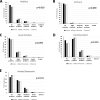A national survey on COVID-19 second-wave lockdowns on older adults' mental wellbeing, health-seeking behaviours and social outcomes across Australia
- PMID: 34193070
- PMCID: PMC8243046
- DOI: 10.1186/s12877-021-02352-1
A national survey on COVID-19 second-wave lockdowns on older adults' mental wellbeing, health-seeking behaviours and social outcomes across Australia
Abstract
Background: The impact of severe second lockdown measures on older adults' wellbeing is unknown. We aimed to (i) identify the impact of the second lockdown that resulted from the second wave of COVID-19 cases on older Australians' quality of life; (ii) compare the impact of second wave lockdowns in Victoria, Australia's second most populous State, to those in other States and Territories not in lockdown.
Methods: A national cross-sectional study of community-dwelling older adults completed online questionnaires for quality of life, social networks, healthcare access, and perceived impact of COVID-19 between July to September 2020. Tobit regression was used to measure the relationships of healthcare service access and social networks with quality of life of older adults in Victoria compared to those in the rest of Australia.
Results: A total of 2,990 respondents (mean [SD] age, 67.3 [7.0]; 66.8 % female) participated. At time of data collection, Victoria's second COVID-19 lockdown had been in force for an average 51.7 days. Median quality of life scores were significantly higher in Victoria compared to the rest of Australia (t2,827=2.25 p = 0.025). Being female (95 % CI, -0.051-0.020), having lower educational attainment (95 % CI, -0.089--0.018), receiving government benefits (95 % CI, -0.054--0.024), having small social networks (95 % CI, 0.006-0.009) and self-reported physical chronic health conditions were all independent predictors of lower quality of life.
Conclusions: Longer-term studies are required to provide more robust evidence of the impact as restrictions lift and normal social conventions return.
Keywords: 2019 novel coronavirus diseases (COVID-19); Lifestyle restrictions; Lockdown; Social networks; Wellbeing.
Conflict of interest statement
The authors declare that they have no competing interests.
Figures


Similar articles
-
Mental health consequences of COVID-19 suppression strategies in Victoria, Australia: a narrative review.J Int Med Res. 2022 Nov;50(11):3000605221134466. doi: 10.1177/03000605221134466. J Int Med Res. 2022. PMID: 36352494 Free PMC article. Review.
-
"Provided a window on the world and lessened my feeling of isolation": older adults' perceived COVID-19 impact and technology use in Australia during recurrent lockdowns.BMC Geriatr. 2024 Feb 28;24(1):206. doi: 10.1186/s12877-024-04807-7. BMC Geriatr. 2024. PMID: 38419001 Free PMC article.
-
A repeated cross-sectional and longitudinal study of mental health and wellbeing during COVID-19 lockdowns in Victoria, Australia.BMC Public Health. 2022 Dec 27;22(1):2434. doi: 10.1186/s12889-022-14836-9. BMC Public Health. 2022. PMID: 36575409 Free PMC article.
-
Perceptions of Covid-19 lockdowns and related public health measures in Austria: a longitudinal online survey.BMC Public Health. 2021 Aug 4;21(1):1502. doi: 10.1186/s12889-021-11476-3. BMC Public Health. 2021. PMID: 34344343 Free PMC article.
-
Use of online cultural content for mental health and well-being during COVID-19 restrictions: cross-sectional survey.BJPsych Bull. 2022 Oct;46(5):278-287. doi: 10.1192/bjb.2021.103. BJPsych Bull. 2022. PMID: 34763744 Free PMC article. Review.
Cited by
-
Older adults' perspectives towards optimizing lifestyle behaviors and strategies to support healthy brain ageing during COVID-19 restrictions.Front Public Health. 2023 Aug 30;11:1205001. doi: 10.3389/fpubh.2023.1205001. eCollection 2023. Front Public Health. 2023. PMID: 37711233 Free PMC article.
-
Support needs of Australians bereaved during the COVID-19 pandemic: A cross-sectional survey study.PLoS One. 2024 Jun 6;19(6):e0304025. doi: 10.1371/journal.pone.0304025. eCollection 2024. PLoS One. 2024. PMID: 38843213 Free PMC article.
-
Relative role of border restrictions, case finding and contact tracing in controlling SARS-CoV-2 in the presence of undetected transmission: a mathematical modelling study.BMC Med. 2023 Mar 16;21(1):97. doi: 10.1186/s12916-023-02802-0. BMC Med. 2023. PMID: 36927576 Free PMC article.
-
Mental health consequences of COVID-19 suppression strategies in Victoria, Australia: a narrative review.J Int Med Res. 2022 Nov;50(11):3000605221134466. doi: 10.1177/03000605221134466. J Int Med Res. 2022. PMID: 36352494 Free PMC article. Review.
-
Exploring what matters to residents of Australian aged care facilities with the Happy Life Index: comparison of qualitative responses between pre- and mid-Covid-19 pandemic time points.Qual Life Res. 2023 Aug;32(8):2247-2257. doi: 10.1007/s11136-023-03387-0. Epub 2023 Mar 16. Qual Life Res. 2023. PMID: 36928652 Free PMC article.
References
-
- Physical distancing for coronavirus (COVID-19) [https://www.health.gov.au/news/health-alerts/novel-coronavirus-2019-ncov...]
-
- Coronavirus, social and physical distancing and self-quarantine [https://www.hopkinsmedicine.org/health/conditions-and-diseases/coronavir...]
MeSH terms
LinkOut - more resources
Full Text Sources
Medical

